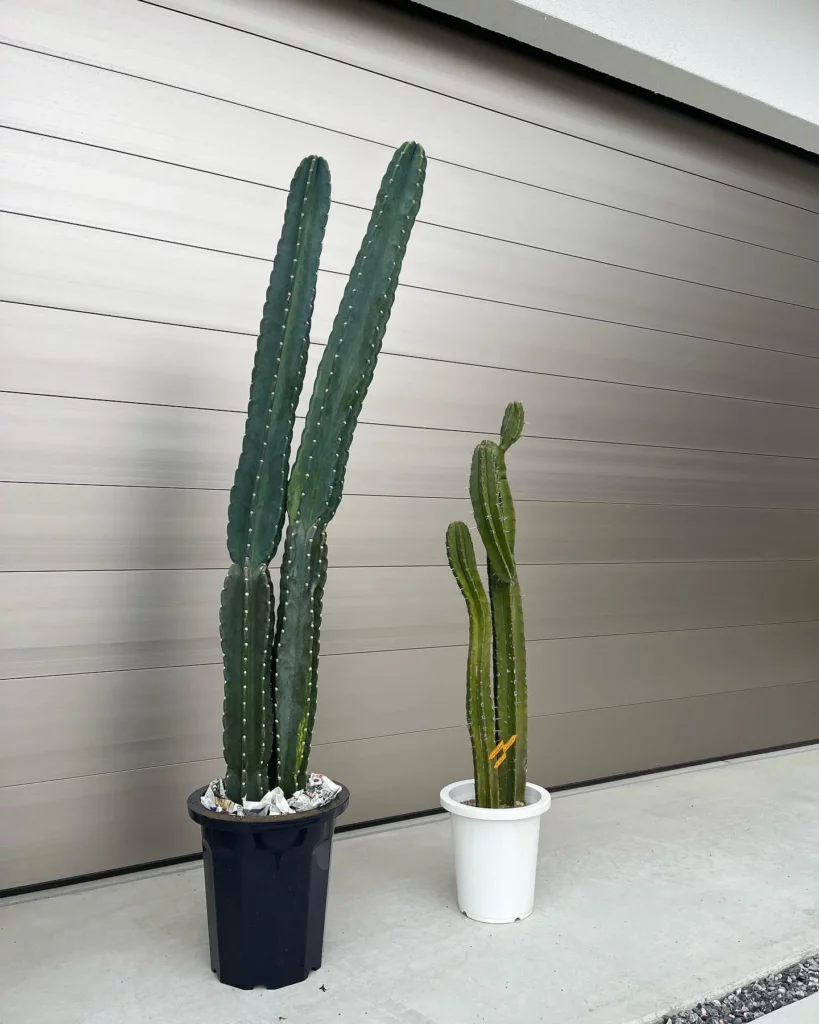The Teddy Bear Cholla, or teddy bear cactus, has a distinct appearance that sets it apart from other cacti. Its branches, resembling a cuddly teddy bear from afar, are in fact covered in numerous spines. These spines have microscopic barbs that make them difficult to remove once they get stuck. This mesmerizing cactus grows to about five feet tall and forms thickets of clones through its unique ability to detach and root its short branches.
Appearance of Teddy Bear Cholla (Teddy Bear Cactus)
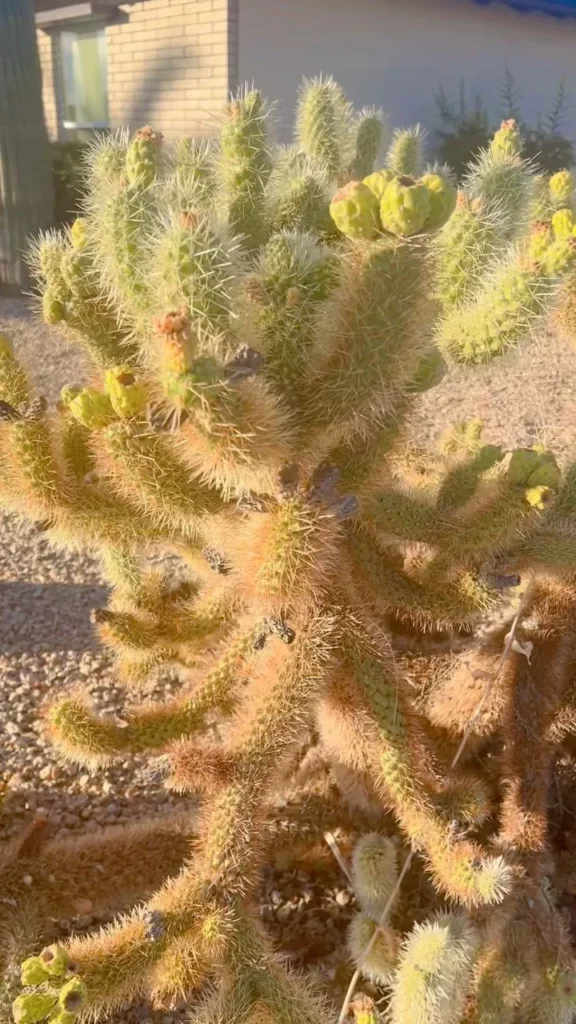
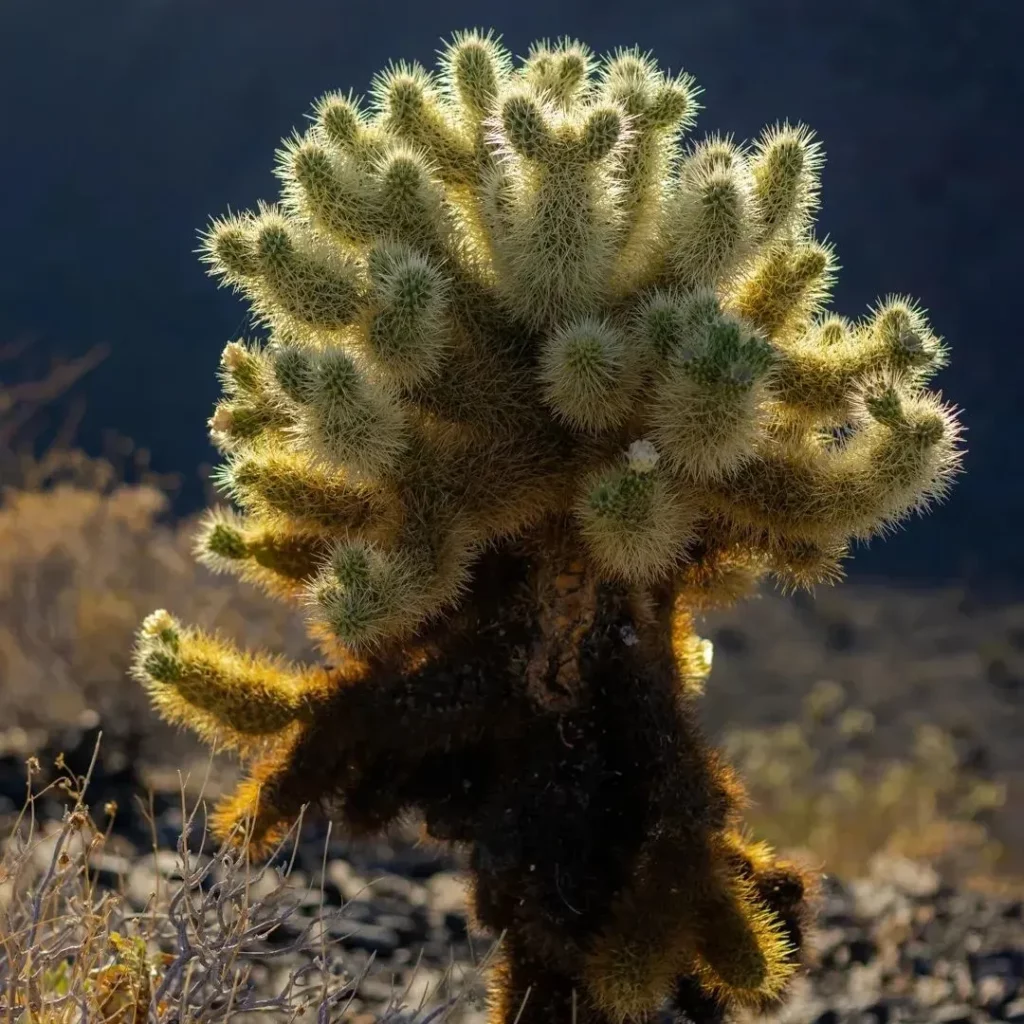

The teddy bear cholla cactus has a distinct appearance that sets it apart from other cacti. From a distance, its branches look soft and fuzzy, resembling a teddy bear. However, upon closer inspection, these fuzzy branches are revealed to be covered in prickly spines. The spines are not only numerous but also have microscopic barbs, making them difficult to remove once they get stuck. This cactus grows to about five feet tall and has central trunks with short branches that easily detach and root, allowing it to propagate and form dense thickets.
Light Requirements for Teddy Bear Cholla
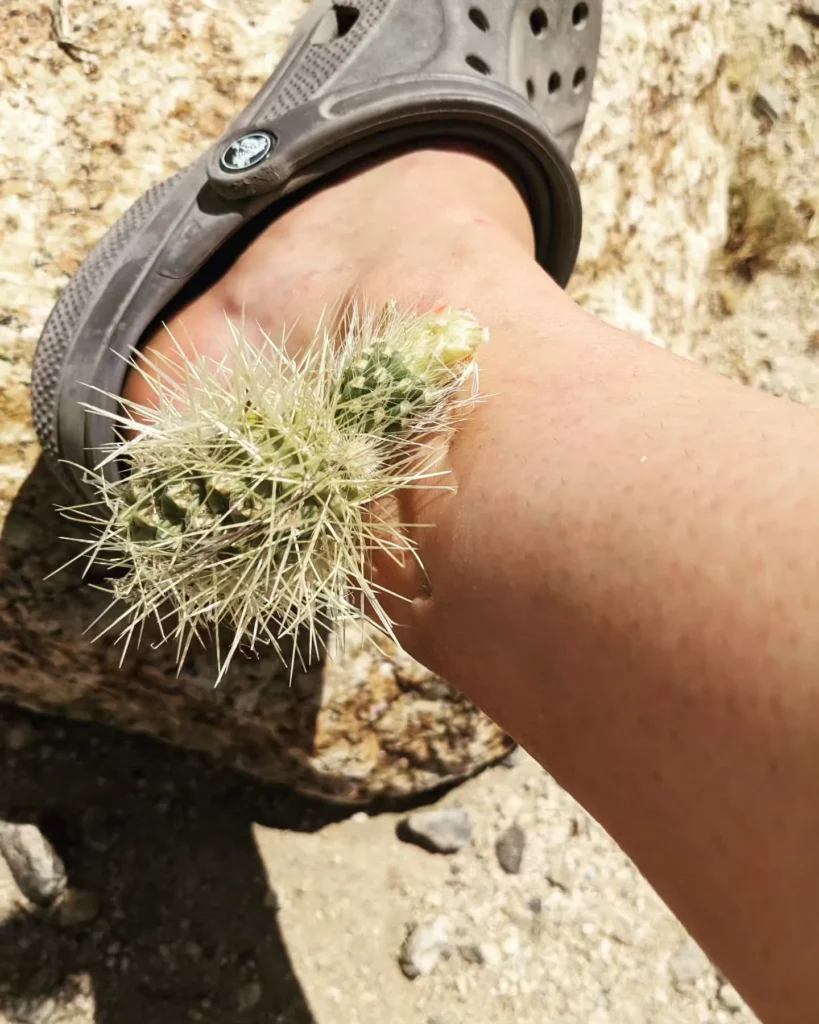
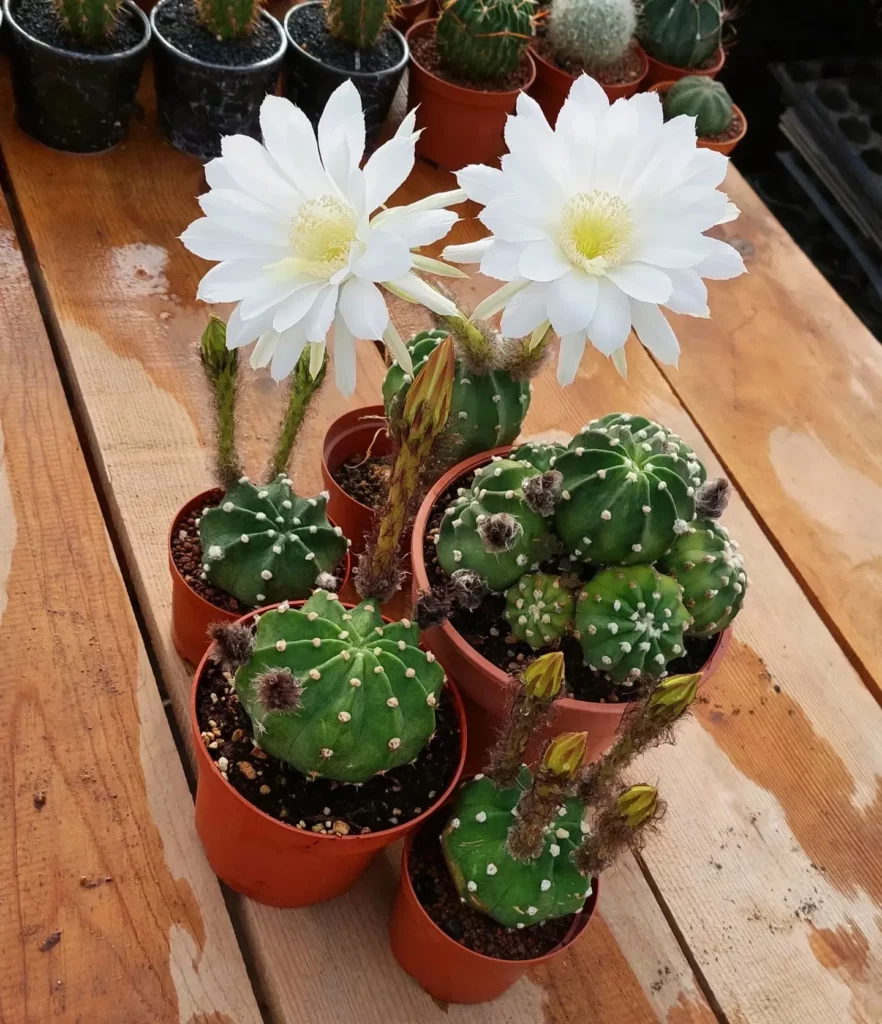

Teddy bear cholla cacti thrive in the bright and sunny desert landscape. Like other desert plants, they require plenty of direct sunlight to grow and thrive. These cacti are adapted to the harsh conditions of the desert and can tolerate intense sun exposure. They are often found in open areas where they can receive maximum sunlight. Adequate light is crucial for the growth and development of teddy bear cholla cacti, ensuring they maintain their unique appearance and vibrant green color.
Watering Teddy Bear Cholla
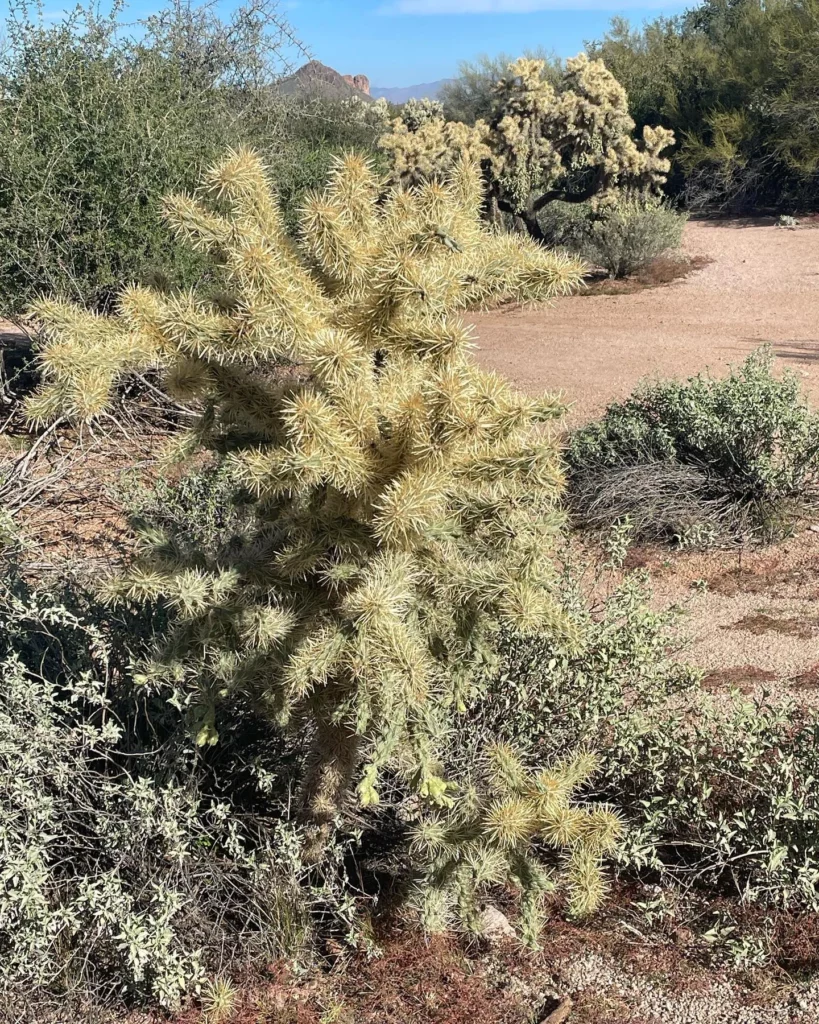
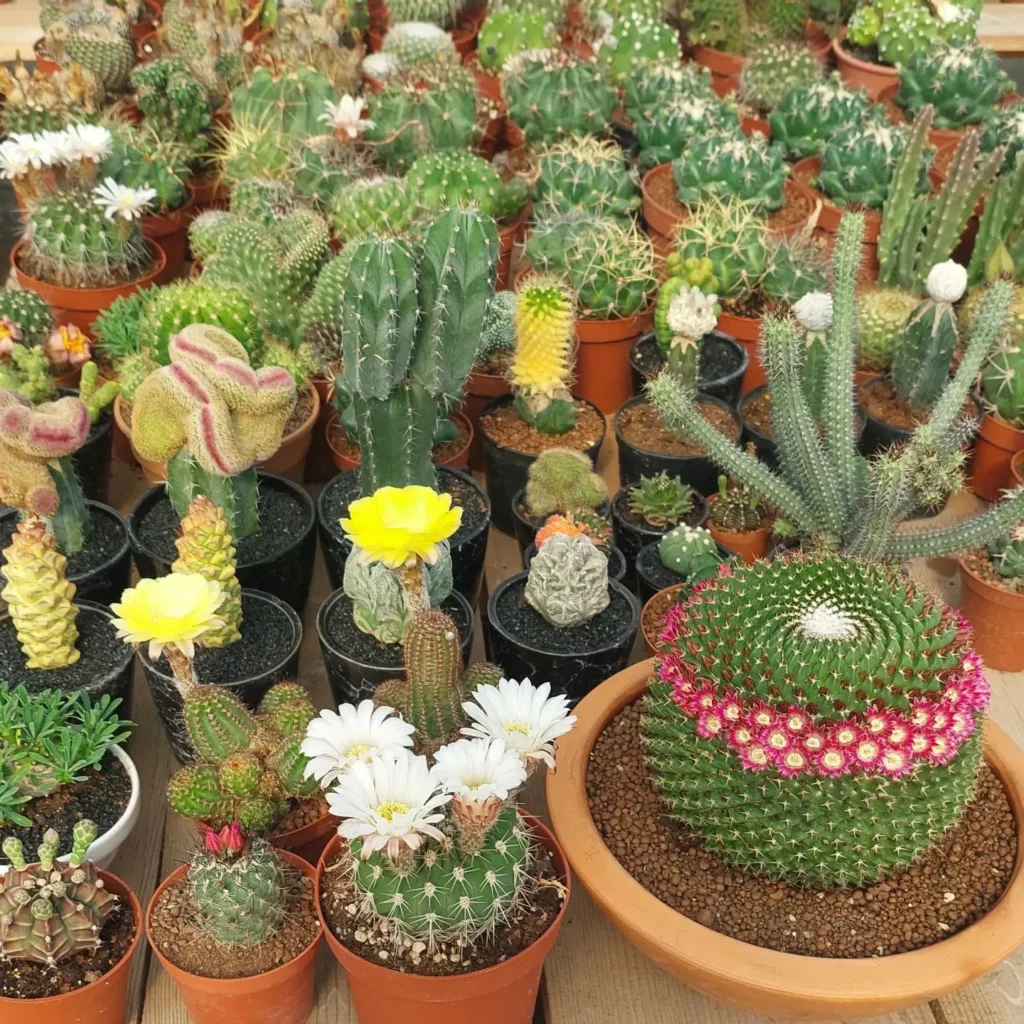
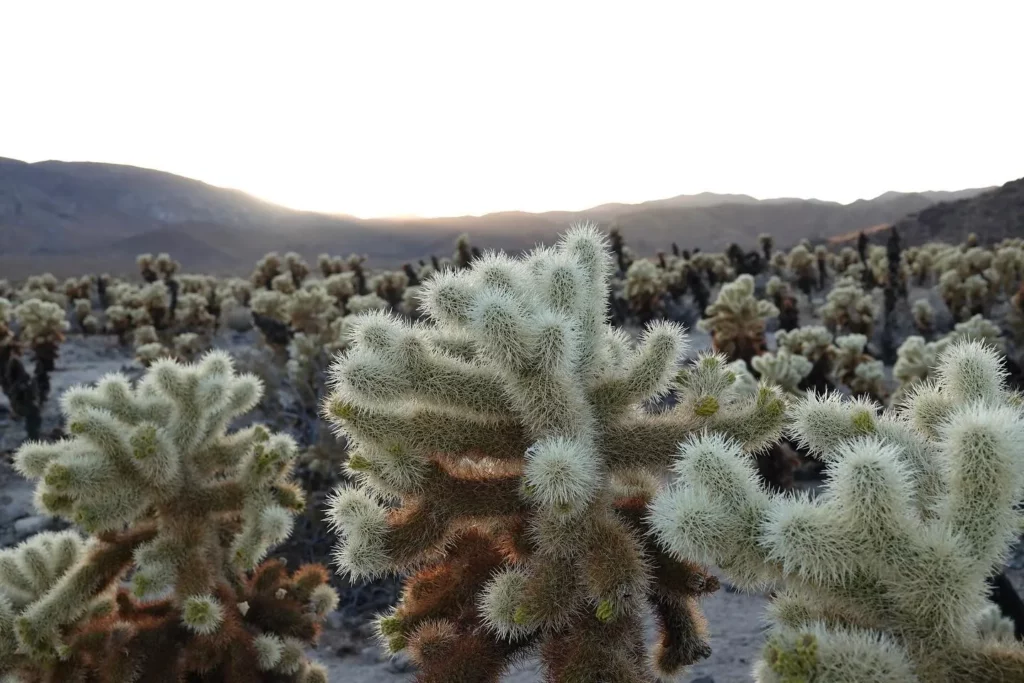
Teddy bear cholla cacti are resilient desert plants that have adapted to survive in arid conditions. These drought-tolerant cacti have deep root systems that efficiently absorb and store water. In their natural habitat, they rely primarily on rainfall for moisture. When growing teddy bear cholla as a houseplant, it’s important to replicate their natural watering conditions.
To ensure the health of your teddy bear cholla, allow the soil to dry out between waterings. Overwatering can lead to root rot and other problems, so it’s best to err on the side of underwatering. Check the soil moisture level before watering again, and only water when the top few inches feel completely dry.
During the growing season, typically spring through fall, water your teddy bear cholla once every two to three weeks. In the winter months when the plant is dormant, reduce watering to once every four to six weeks. Always adjust watering frequency based on the specific needs of your cactus and the conditions in your environment.
Watering Tips for Teddy Bear Cholla
- Use a well-draining soil mix designed for cacti and succulents to prevent waterlogging.
- Water the base of the plant directly, avoiding wetting the spines and branches, as this can lead to rot.
- Ensure proper drainage by using a pot with drainage holes to prevent excess moisture buildup.
- Consider misting the plant occasionally to mimic the light desert rains that teddy bear cholla typically receive.
Fertilizing Teddy Bear Cholla

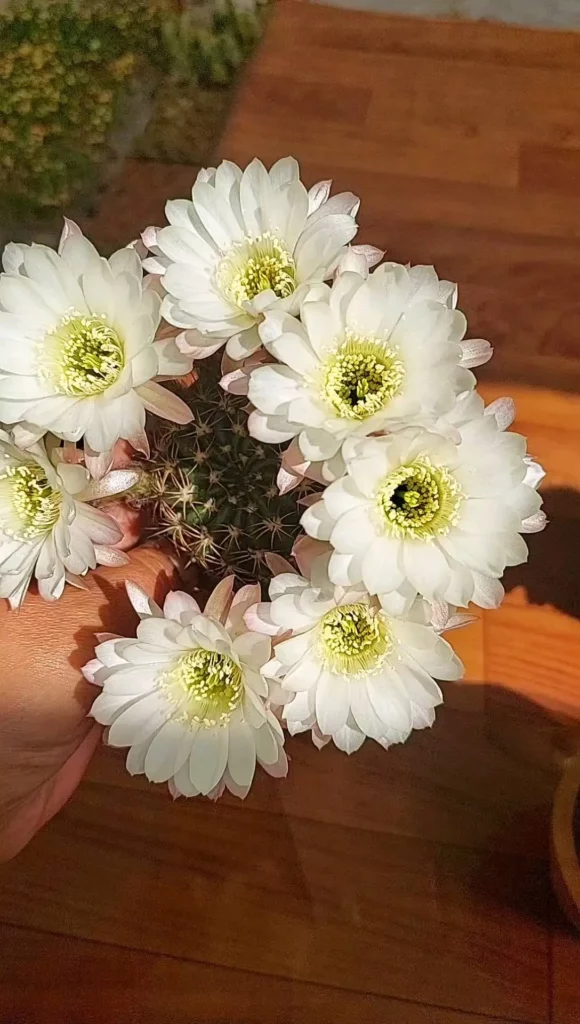
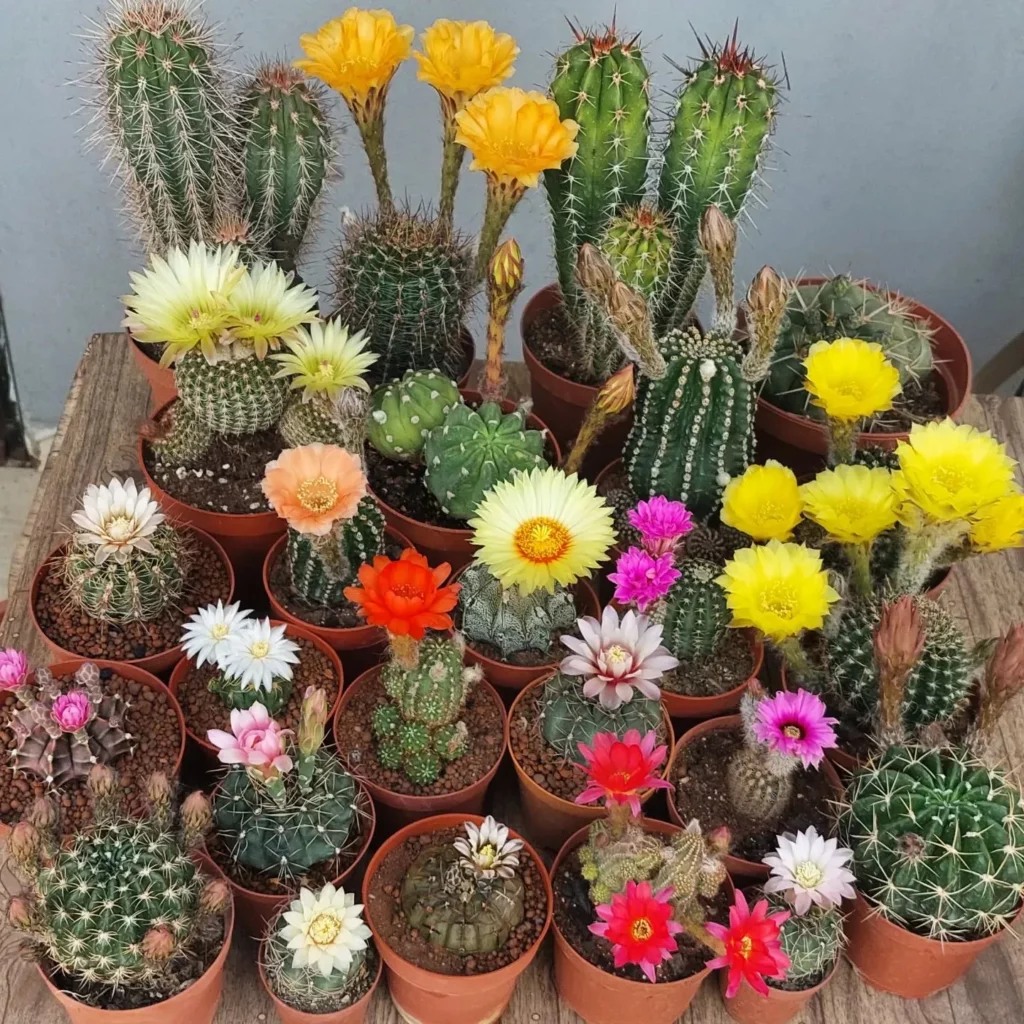
Teddy bear cholla cacti, being desert plants, are naturally adapted to grow in low-nutrient soils. As a result, they do not require regular fertilization. In fact, applying too much fertilizer can be detrimental to the health of these plants. As a responsible caretaker, it is best to avoid fertilizing your teddy bear cholla unless you observe clear signs of nutrient deficiency, such as pale or yellowing stems.
If you find it necessary to fertilize your teddy bear cholla, it is vital to use a specialized cactus fertilizer with a low nitrogen content. This type of fertilizer is formulated to provide the essential nutrients that desert plants need without overloading them. When applying the fertilizer, it’s crucial to use it sparingly and follow the recommended dosage instructions to ensure the health and longevity of your teddy bear cholla cacti.
Potting Teddy Bear Cholla
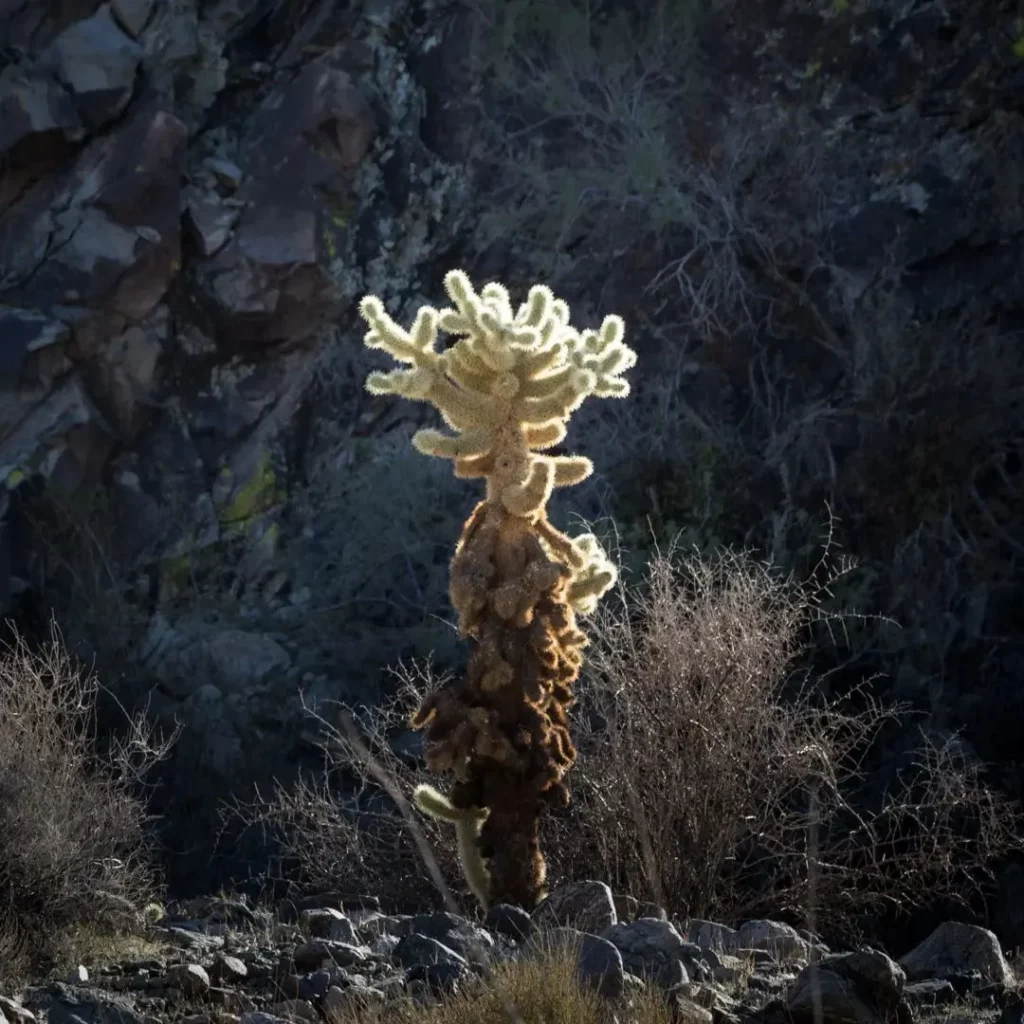
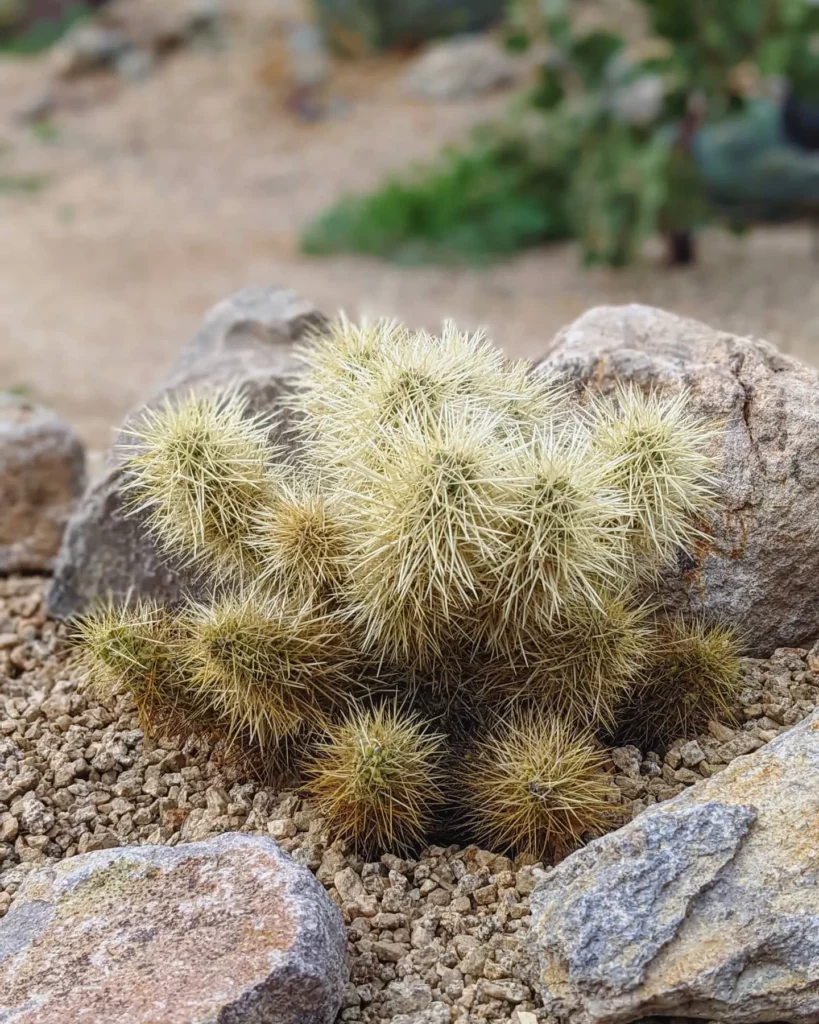
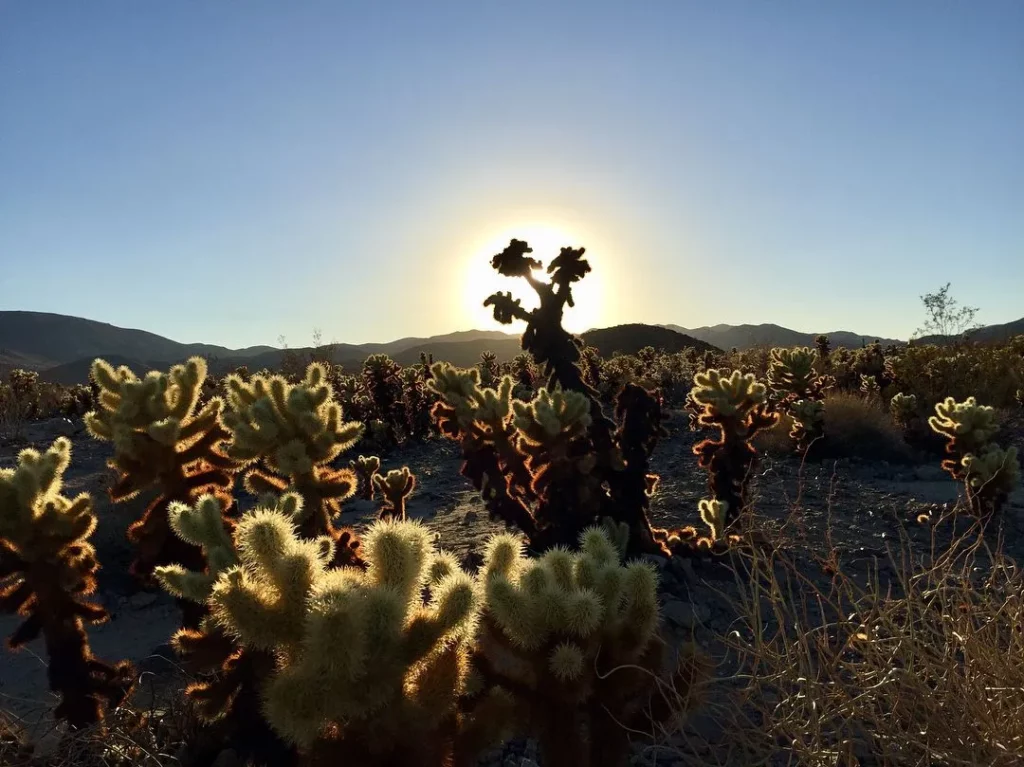
Teddy bear cholla cacti can be easily potted in containers, making them a great addition to your indoor or outdoor space. When potting teddy bear cholla, it is crucial to choose the right soil mix and ensure proper drainage to support their health and growth.
Choosing the Right Soil Mix
For potting teddy bear cholla, it is essential to use a well-draining soil mix specifically formulated for cacti and succulents. This type of soil allows excess water to escape quickly, preventing the risk of root rot and other moisture-related issues. Look for soil mixes that contain materials like sand, perlite, or pumice, which promote proper drainage.
Ensuring Adequate Drainage
When potting teddy bear cholla, it is recommended to use containers with drainage holes. These holes allow excess water to escape, preventing waterlogged soil and ensuring that the roots stay healthy. If you have a container without drainage holes that you wish to use, you can create drainage by adding a layer of gravel or small stones at the bottom before adding the soil.
Repotting Considerations
Teddy bear cholla cacti prefer to remain undisturbed once they have established their roots. Therefore, it is best to repot them only when necessary, such as when the current container becomes too small or if you notice signs of root congestion. When repotting, handle the cactus with care, using gloves or tongs to protect yourself from the spines. Choose a slightly larger pot, ensuring it has proper drainage, and use the same well-draining soil mix mentioned earlier.
Propagation of Teddy Bear Cholla
Teddy bear cholla cacti can easily be propagated through stem cuttings, allowing you to grow new plants from existing ones. This method involves carefully removing a segment of a branch from the parent plant. It’s important to handle the cuttings with care to avoid injury from the sharp spines.
After cutting a segment of a branch, allow it to dry and callus for a few days. This process helps protect the cutting from rotting once planted. During this time, the cut end of the stem should be left exposed to the air to facilitate callusing.
Once the stem cutting has callused, it can be planted in a well-draining soil mix. You can choose to plant the cutting in a pot or directly in the ground, depending on your preference. Remember to avoid overwatering during the propagation process, as excessive moisture can lead to rot.
Growth and Development of Teddy Bear Cholla
Teddy bear cholla cacti are fascinating desert plants that display slow-growing characteristics. It takes time for these cacti to reach their full size and develop their unique branching pattern. Young teddy bear cholla plants can take several years to mature into impressive specimens. The growth rate of these cacti is influenced by various factors, including light exposure, temperature, and water availability.
Thriving in the harsh desert environment, teddy bear cholla cacti have adapted to a slow-paced growth strategy, allowing them to withstand challenging conditions. With patience and proper care, these cacti can become stunning additions to both natural habitats and indoor spaces.
- Factors affecting growth: The growth rate of teddy bear cholla cacti is influenced by several factors such as:
- Light exposure: These cacti require ample sunlight to thrive and grow. Maximizing their exposure to bright desert sun is crucial for their healthy development.
- Temperature: Desert temperatures play a significant role in the growth of teddy bear cholla cacti. They are adapted to withstand extreme heat, which promotes their slow yet steady growth.
- Water availability: Teddy bear cholla cacti have adapted to survive with minimal water. They rely on occasional rainfall and excellent water storage capacities to sustain their growth and development.
- Cactus resilience: The slow-growing nature of these cacti contributes to their resilience in harsh desert environments. By taking their time to grow and develop, teddy bear cholla cacti are better equipped to withstand challenging conditions, such as limited resources and extreme temperatures.
- Impressive specimens: Given the right conditions and care, teddy bear cholla cacti can become impressive specimens. Their gradual growth and distinctive appearance make them captivating additions to any desert landscape or indoor plant collection.
Pests and Diseases of Teddy Bear Cholla
Teddy bear cholla cacti, like many desert plants, are known for their resilience against pests and diseases. However, these hardy cacti can still be vulnerable to certain issues, such as spider mites and mealybugs. Regularly inspecting your teddy bear cholla plants for signs of these pests is crucial to maintaining their health.
If you notice any small insects or white cotton-like substances on your cactus, it may be infested with spider mites or mealybugs. To combat these pests, you can use an insecticidal soap or neem oil. Applying these treatments as soon as you detect the infestation will help control the problem and prevent further damage.
Another potential threat to your teddy bear cholla is fungal diseases, particularly root rot. This can occur if the plant is exposed to excess moisture or if the soil does not provide proper drainage. To prevent fungal diseases, ensure that your plant receives adequate airflow, avoid overwatering, and use well-draining soil. These simple steps will help keep your teddy bear cholla cacti healthy and free from diseases.
FAQ
What is the teddy bear cholla cactus?
The teddy bear cholla cactus, also known as Cylindropuntia bigelovii, is a unique desert plant with branches covered in dense spines. Its appearance may be deceptive, as it looks soft and fuzzy from a distance, resembling a teddy bear.
How does the teddy bear cholla cactus propagate?
The teddy bear cholla cactus propagates through its short branches, which easily detach and root, allowing it to form thickets of clones.
What are the light requirements of the teddy bear cholla cactus?
Teddy bear cholla cacti thrive in bright and sunny desert landscapes. They require plenty of direct sunlight to grow and maintain their unique appearance and vibrant green color.
How much water does the teddy bear cholla cactus need?
Teddy bear cholla cacti are adapted to survive in arid conditions and are drought-tolerant. They require minimal watering and rely mainly on rainfall for moisture. When grown as a houseplant, it is best to allow the soil to dry out between waterings.
Does the teddy bear cholla cactus need fertilization?
Teddy bear cholla cacti do not require regular fertilization. They are adapted to grow in low-nutrient desert soils. Fertilizing should only be done if there are clear signs of nutrient deficiency.
How should I pot the teddy bear cholla cactus?
When potting teddy bear cholla cacti, it is important to use a well-draining soil mix specifically formulated for cacti and succulents. Ensure that the pot has drainage holes to prevent moisture-related issues.
How can I propagate the teddy bear cholla cactus?
Teddy bear cholla cacti can be propagated through stem cuttings. Carefully remove a segment of a branch, allow it to dry and callus, and then plant it in well-draining soil.
How fast does the teddy bear cholla cactus grow?
Teddy bear cholla cacti are slow-growing plants. It can take several years for them to reach their full size and develop their characteristic branching pattern.
What pests and diseases affect the teddy bear cholla cactus?
Teddy bear cholla cacti are relatively resistant to pests and diseases. However, they can occasionally be affected by pests like spider mites and mealybugs. Overwatering can also lead to fungal diseases like root rot.

